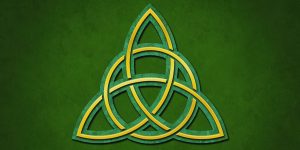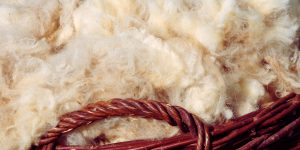Once that’s done you’ll be able to experience the KnittingTours website perfectly.


Samhain is celebrated from October 31st to November 1st and it is one of the four major Celtic festivals, alongside Imbolc, Beltaine and Lughnasadh. As well as marking the end of harvest, it symbolises death, rebirth, and renewal.
Unlike Halloween’s modern focus on costumes and treats, Samhain is steeped in spiritual significance. The Celts believed that during this time, the boundary between the physical world and the spiritual world became permeable, allowing our ancestors to visit. Bonfires would be lit, places set at the table for departed loved ones and offerings left for the spirits.

The ancient Celts may not have practiced knitting as we know it today, but textile arts such as weaving, spinning, and dyeing were integral parts of Celtic daily life. Knitting itself is a meditative and rhythmic activity, making it an excellent way to align yourself with the reflective nature of Samhain.
As you sit with your needles, the repetitive motions of knitting can become a form of quiet contemplation—a time to think about your own transitions, the passing of seasons, and the cycle of life.
Celtic tradition often used the imagery of threads and weaving to represent fate and the entwining of life. The Celts saw life as a continuous web woven from the past, present, and future. When you knit during Samhain, you can meditate on this symbolism with each stitch representing a moment in time – all coming together to form the bigger picture of your creation. Those of you who have enjoyed classes on our Ireland, Scotland and Shetland tours will have discovered the beauty and significance of many of these stitches!
Celtic Knitting: Patterns Inspired by Tradition
Celtic designs are well known for their intricate knot work, spirals, and interlacing patterns—symbols of eternity and the cycles of nature. These motifs can easily be incorporated into your knitting projects and add a layer of meaning and beauty to your work.
Celtic Knot Cables
The iconic Celtic knot, with its endless loops and interwoven strands, is a symbol of eternity, unity, and the interweaving of life and death. In knitting, Celtic knots can be represented with cable stitches. These cables are knitted into everything from scarves to sweaters, creating a design that reflects the ancient symbols of balance and harmony.
Triskelion Motif
The triskelion, a triple spiral pattern, represents many things in Celtic heritage, including the three realms of earth, sea, and sky and the stages of life (birth, death, and rebirth). This motif can be incorporated beautifully into mittens, hats or blankets to bring an ancient touch to your knitting project.
Tree of Life Patterns
The Tree of Life is another powerful symbol in Celtic culture, representing growth, strength, and a bonding between heaven and earth. Knitting a blanket or wall hanging with a Tree of Life design during Samhain is not only a nod to this symbolism but also a way to honour your ancestors and reflect on personal growth.

As the nights grow longer and the air becomes chillier, Samhain is a reminder to prepare for winter. In ancient times, the Celts saw this as a time to stockpile food, fortify their homes, and prepare for survival during the cold, dark months. Today, knitting is a practical way to keep warm, but in the spirit of Samhain, it can also take on a protective, almost magical quality!
Knitting Protective Garments
During Samhain, it was believed that the spirits wandering the earth could bring both blessings and mischief. To protect themselves, people would wear disguises or carry charms. In a modern context, knitting a warm garment like a shawl, cloak, or pair of mittens can be created with protective intentions. Natural fibres such as wool have traditionally been valued for their warmth and insulation of course!
Using Wool from Local Farms
In keeping with the Celtic reverence for nature, using wool you may have purchased on one of our Celtic tours from local farms or independent yarn producers is a great homage! If not, by knitting with wool that comes from animals raised on nearby farms, you bring a piece of your local environment into your knitting, honouring the harvest season and the turning of the year.

Here are a few ideas for incorporating the spirit of Samhain into your knitting!
Create an Ancestor Shawl
Knit a shawl or scarf dedicated to a beloved ancestor. Choose colours or patterns that remind you of them, or knit in their favourite shades. As you work, think of the stories passed down or the wisdom and joy they brought into your life. This shawl can become a cherished keepsake or a comforting item to wear when you want to feel connected to your loved ones.
Candlelight Knitting
Since Samhain traditionally involved the lighting of fires and candles to guide spirits, try lighting a few candles or a cosy fire. This can help create a peaceful, meditative atmosphere as you reflect on the passing year and the turning season. Of course, you may well need the addition of modern lighting to protect your eyes!
Knotting Intentions
When incorporating Celtic knotwork into your knitting, use each knot as a way to ‘tie in’ an intention for the Celtic new year. As you knit each knot or cable, think about the intentions you want to weave into your life.
Samhain is a time for reflection and transition. Whether you are knitting cosy garments for the winter ahead or making pieces inspired by Celtic symbolism, as a knitter, you have the unique opportunity to combine ancient traditions with your creative process and contemporary style.
Happy Knitting!